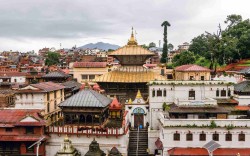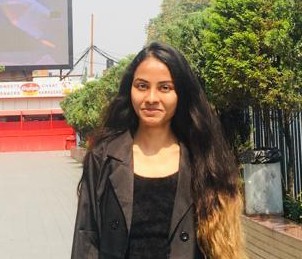Culture
Tharu people are considered the aboriginal people of the Tarai belt scattered across southern Nepal and the northern Indian states of Uttar Pradesh and Bihar.
The traditional inhabitants of the tropical forests are believed to possess the physical ability to resist Malaria, which is caused by a type of mosquito.
Over time, members of the Tharu community have migrated to bigger cities, including Kathmandu, where they have also introduced their cuisines and festivals. As a result, the capital city has become a melting pot of Nepal’s vast ethnic diversity, boasting over a hundred ethnic groups.
They include Tharu people, too, with minimum 1,500 families in the valley.
This past week, a group of colourfully-dressed Tharu women gathered at Maitighar Mandala in the city's heart to demonstrate how they celebrate one of their biggest festivals – Sama-Chakeva. The festival is believed to renew the deep bonds between brothers and sisters.
The festival is part of a Hindu tradition.
Purshottam Chaudhary, a professor and researcher, says Sama-Chakeva means a festival that marks the love between brothers and sisters.
The festival includes folk theatre and songs. It is also believed to be a festival of unity. Sama-Chakeva is a 10-day Hindu festival celebrated in November.
It starts on the night of Chhath puja and continues till Kartik Purnima.
As part of the festival, on the first day, the unmarried women of the community gather at dusk near the ghats with a basket containing small idols of Sama and Chakeva, candles, and clay.
They decorate the idols of Sama-Chakeva with various colours. They sing, dance, and retell the folklore wishing good health and well-being to their brothers.
On Kartik Purnima, they mark the festival's end, taking a dip in the water bodies and immersing the idols in ponds or rivers.
Not just the Tharu people of the central and eastern Tarai, the festival is also observed by people of other communities living in the Mithilanchal region, which is spread across north Bihar, east Nepal, and Madhesh Province in southern Nepal.
The Tharu communities across the eastern Tarai, including Mahottari, Sarlahi, Siraha, Dhanusha, Saptari, Bara, and Parsa celebrate the festival.
Among them are the Tharu people living in Kathmandu Valley, who first migrated to the capital at the time of the Late King Prithivi Narayan Shah (1723–1775).
More Tharu festivals
WATCH: Traditional Tharu Sakhiya Nach via Magendra Chaudhary's YouTube channel
NepalMinute.com is not responsible for third party content
Not just Sama-Chakeva, members of the Tharu community also observe other festivals like the Jitiya, which falls in September, and Maghi in mid-January.
The Tharus from the eastern region mostly celebrate Jitiya, while those from the west celebrate Maghi.
“The Jitiya festival indicates the mother’s love for her children,” says Purshottam Chaudhary. “In this festival, mother fasts for the long life of children, the birth of a son, and family happiness and peace.”
Not only the festivals but the language of the Tharu people living in the Tarai belt differs.
Tharu people living in the east have a Maithili language mix in their language.
Likewise, central Tharu language has a mix of Bhojpuri, and the west has its own mix of Awadhi.
Who are Tharu people?
According to the Backward Society Education, the Tharu people are an indigenous ethnic group living in Nepal's lowlands for centuries. When a thick malarial jungle covered the Tarai region, it helped them to keep away outsiders and guaranteed their freedom.
Their relative isolation led them to develop a distinct and self-sufficient society with their development, language, religion, and culture differing from the hill people.
The community, however, is not just confined within Nepali borders. It is scattered across Bihar and Uttar Pradesh in India too. Their total population is estimated at 2.1 million, of which nearly 1.8 million live in Nepal.
In recent times, Tharu people have migrated to bigger cities for higher education or better working opportunities. As well as their festivals, they have also introduced their cuisines to new places - opening Tharu eateries and restaurants.
“Wherever they may have reached, the community is struggling to protect, preserve and promote its tradition, and culture due to the modernisation,” says Chaudhary.
“And Sama-Chakeva along with its folk song is just an example.”
(All Photo: NepalMinute.com)

1679038049.jpg)




